A Detailed Review of the Design and Evaluation of XR Applications in STEM Education and Training
Abstract
1. Introduction
1.1. Background
1.2. Gaps and Challenges
1.3. Research Questions
- How are the principal aspects of XR including presence, immersion, and interaction applied in current XR applications for STEM education?
- What challenges do learners face due to cognitive load, interface design or limited adaptability in XR systems.
- What design guidelines can be derived to support accessible, engaging, and cognitively effective XR learning environments?
2. Theoretical Framework
2.1. Cognitive Affective Model of Immersive Learning (CAMIL)
2.2. Constructivist and Cognitive Load Theories
2.3. Human–Computer Interaction and Usability
2.4. L1–L2 Learning in XR Systems
3. Methodology
4. Findings
4.1. Presence and Immersion
4.2. Affordances and Interaction
4.3. Agency and Autonomy
4.4. Summary of Findings
5. Discussion
5.1. Theoretical Implications
5.2. Design Implications
5.3. Limitations in Current XR Research
5.4. Future Research Directions
5.5. Practical Implications
6. Proposed Design Framework
6.1. Enhancing Presence
6.2. Strengthening Agency
6.3. Optimizing Affordances
6.4. Reducing Cognitive Load
6.5. Ensuring Accessibility and Inclusivity
6.6. Summary of the Design Framework
7. Conclusions
7.1. Key Findings
7.2. Contributions
7.3. Implications for STEM Education
7.4. Final Remarks
Author Contributions
Funding
Data Availability Statement
Conflicts of Interest
References
- Milgram, P.; Kishino, F. A taxonomy of mixed reality visual displays. IEICE Trans. Inf. Syst. 1994, 77, 1321–1329. [Google Scholar]
- Lee, K. Augmented reality in education and training. TechTrends 2012, 56, 13–21. [Google Scholar] [CrossRef]
- Antoni, V.; Maurer, F.; Cesari, O.; Eichhorn, C.; Vilhjálmsson, H.H. AR in molecular visualization for chemistry education. Chem. Educ. Res. Pract. 2023, 23, 12–28. [Google Scholar]
- Carlson, P.; Hays, J.; May, J. Virtual training: Learning transfer of assembly tasks. IEEE Trans. Vis. Comput. Graph. 2015, 21, 770–782. [Google Scholar] [CrossRef]
- Makransky, G.; Petersen, G.B. The cognitive affective model of immersive learning (CAMIL): A theoretical research-based model of learning in immersive virtual reality. Educ. Psychol. Rev. 2021, 33, 937–958. [Google Scholar] [CrossRef]
- Sweller, J. Cognitive load theory. In Psychology of Learning and Motivatio; Mestre, J.P., Ed.; Academic Press: San Diego, CA, USA, 2011; Volume 55, pp. 37–76. [Google Scholar]
- Yang, H.; Li, X.; Sun, W. Gesture-based interactions in educational VR environments. IEEE Trans. Learn. Technol. 2020, 13, 432–440. [Google Scholar]
- Chandramouli, M.; Nere, K.; Williams, A.; Shimpi, J. Multimodal virtual reality & digital twin-based training for specialized process equipment in biotech/biopharma manufacturing. In Proceedings of the International Conference on Intelligent Computing, Virtual Augment Reality Simulations, Birmingham, UK, 25–27 July 2025. [Google Scholar]
- Hein, G.E. Constructivist Learning Theory; Institute for Inquiry: Fitzroy, VI, USA, 1991. [Google Scholar]
- Ibáñez, M.-B.; Delgado-Kloos, C. Augmented reality for STEM learning: A systematic review. Comput. Educ. 2018, 123, 109–123. [Google Scholar] [CrossRef]
- Page, M.J.; McKenzie, J.E.; Bossuyt, P.M.; Boutron, I.; Hoffmann, T.C.; Mulrow, C.D.; Shamseer, L.; Tetzlaff, J.M.; Akl, E.A.; Brennan, S.E.; et al. The PRISMA 2020 statement: An updated guideline for reporting systematic reviews. BMJ 2021, 372, 71. [Google Scholar] [CrossRef]
- Slater, M.; Wilbur, S. A framework for immersive virtual environments (FIVE): Speculations on the role of presence in virtual environments. Presence 1997, 6, 603–616. [Google Scholar] [CrossRef]
- Makransky, G.; Lilleholt, L. A structural equation modeling investigation of the emotional value of immersive virtual reality in education. Educ. Technol. Res. Dev. 2018, 66, 1141–1164. [Google Scholar] [CrossRef]
- Dede, C. Immersion, presence, and distributed learning. J. Comput. High. Educ. 2009, 21, 95–113. [Google Scholar]
- Radianti, J.; Majchrzak, T.A.; Fromm, J.; Wohlgenannt, I. A systematic review of immersive virtual reality applications for higher education. Comput. Educ. 2020, 147, 103778. [Google Scholar] [CrossRef]
- Parong, J.; Mayer, R.E. Learning science in immersive virtual reality. J. Educ. Psychol. 2018, 110, 785–797. [Google Scholar] [CrossRef]
- Freina, L.; Ott, M. A literature review on immersive virtual reality in education: State of the art and perspectives. In Proceedings of the International Scientific Conference eLearning and Software for Education, Bucharest, Romania, 23–24 April 2015; Volume 1, pp. 133–141. [Google Scholar]
- Makransky, G.; Terkildsen, T.S.; Mayer, R.E. Adding immersive virtual reality to a science lab simulation causes more presence but less learning. Learn. Instr. 2019, 60, 225–236. [Google Scholar] [CrossRef]
- Freeman, A.; Becker, S.A.; Cummins, M.; Davis, A.; Giesinger, C.H. Ananthanarayanan, NMC Horizon Report: 2017 Higher Education Edition; New Media Consortium: Austin, TX, USA, 2017. [Google Scholar]
- SPEXTRA NSF. Demo Mode. Available online: https://spextra-nsf.org/demo-mode (accessed on 30 July 2025).
- Bacca, J.; Baldiris, S.; Fabregat, R.; Graf, S.; Kinshuk. Augmented reality trends in education: A systematic review of research and applications. J. Educ. Technol. Soc. 2014, 17, 133–149. [Google Scholar]
- Dunleavy, M.; Dede, C. Augmented reality teaching and learning. In Handbook of Research on Educational Communications and Technology; Spector, J.M., Merrill, M.D., Elen, J., Bishop, M.J., Eds.; Springer: New York, NY, USA, 2014; pp. 735–745. [Google Scholar]
- Akçayır, M.; Akçayır, G. Advantages and challenges associated with augmented reality for education: A systematic review. Educ. Res. Rev. 2017, 20, 1–11. [Google Scholar] [CrossRef]
- Radu, I. Augmented reality in education: A meta-review and cross-media analysis. Pers. Ubiquitous Comput. 2014, 18, 1533–1543. [Google Scholar] [CrossRef]
- Chen, C.-H.; Wang, K.-C.; Lin, Y.-H. The comparison of solitary and collaborative modes of game-based learning on students’ science learning and motivation. J. Educ. Technol. Soc. 2015, 18, 237–248. [Google Scholar]
- Tene, T.; Marcatoma Tixi, J.A.; Palacios Robalino, M.D.L.; Mendoza Salazar, M.J.; Vacacela Gomez, C.; Bellucci, S. Integrating immersive technologies with STEM education: A systematic review. Front. Educ. 2024, 9, 1410163. [Google Scholar] [CrossRef]
- Mayer, R.E. Multimedia Learning, 2nd ed; Cambridge University Press: New York, NY, USA, 2009. [Google Scholar]
- Milgram, P.; Takemura, H.; Utsumi, A.; Kishino, F. Augmented reality: A class of displays on the reality-virtuality continuum. In Proceedings of the Telemanipulator and Telepresence Technologies, Boston, MA, USA, 31 October–1 November 1994; Volume 2351, pp. 282–292. [Google Scholar]
- Chandramouli, M.; Jin, G.; Heffron, J.; Fidan, I.; Cossette, M.; Welsch, C.A.; Merrell, W. Virtual reality education modules for digital manufacturing instruction. In Proceedings of the 2018 ASEE Annual Conference & Exposition, Salt Lake City, UT, USA, 24–27 June 2018. [Google Scholar]
- Jensen, L.; Konradsen, F. A review of the use of virtual reality head-mounted displays in education and training. Educ. Inf. Technol. 2018, 23, 1515–1529. [Google Scholar] [CrossRef]
- Zheng, B.; Lin, C.H.; Kwon, J.B. The impact of scaffolding on learners’ cognitive load in an online learning environment. Interact. Learn. Environ. 2020, 28, 450–465. [Google Scholar]
- Chandramouli, M.; Lei, T.; Chou, Y.M.; Huang, S.R.; Kolanuvada, S. Desktop virtual reality (VR) & ispace for GIS education through interactive virtual learning environments. ASEE Comput. Educ. J. 2016, 16, 91–104. [Google Scholar]
- Dalgarno, B.; Lee, M.J.W. What are the learning affordances of 3-D virtual environments? Br. J. Educ. Technol. 2010, 41, 10–32. [Google Scholar] [CrossRef]
- Dunleavy, M.; Dede, C.; Mitchell, R. Affordances and limitations of immersive participatory augmented reality simulations for teaching and learning. J. Sci. Educ. Technol. 2009, 18, 7–22. [Google Scholar] [CrossRef]
- Merchant, Z.; Goetz, E.T.; Cifuentes, L.; Keeney-Kennicutt, W.; Davis, T.J. Effectiveness of virtual reality-based instruction on students’ learning outcomes in K–12 and higher education: A meta-analysis. Comput. Educ. 2014, 70, 29–40. [Google Scholar] [CrossRef]
- Alhalabi, W. Virtual reality systems enhance students’ achievements in engineering education. Behav. Inf. Technol. 2016, 35, 919–925. [Google Scholar] [CrossRef]
- Mikropoulos, T.A.; Natsis, A. Educational virtual environments: A ten-year review of empirical research (1999–2009). Comput. Educ. 2011, 56, 769–780. [Google Scholar] [CrossRef]
- Acevedo, P.; Magana, A.J.; Benes, B.; Mousas, C. A systematic review of immersive virtual reality in STEM education: Advantages and disadvantages on learning and user experience. IEEE Access 2024, 12, 189359–189386. [Google Scholar] [CrossRef]
- SPEXTRA NSF. Active Training Mode. Available online: https://spextra-nsf.org/active-training-mode (accessed on 30 July 2025).
- Makransky, G.; Mayer, R.E. Benefits of taking a virtual field trip in immersive virtual reality: Evidence for the immersion principle in multimedia learning. Educ. Psychol. Rev. 2021, 33, 1533–1549. [Google Scholar] [CrossRef]
- Bowman, D.A.; McMahan, R.P. Virtual reality: How much immersion is enough? Computer 2007, 40, 36–43. [Google Scholar] [CrossRef]
- Liu, Y.; Chopra, A.; Dhakal, P.; Banerjee, A.; D’Mello, S.K. Toward neuroadaptive XR: Biometric sensing and adaptive interfaces in immersive learning. Comput. Educ. 2023, 194, 104673. [Google Scholar]
- Kivikangas, J.M.; Vogt, J.; Ravaja, N. A review of presence and measurement in virtual reality research. Front. Psychol. 2021, 12, 643. [Google Scholar]
- Sutcliffe, A.; Gault, B. Heuristic evaluation of virtual reality applications. Interact. Comput. 2004, 16, 831–849. [Google Scholar] [CrossRef]
- Davis, N.; Childs, M.; Howard, Y.; Cobb, S.; Hall, C.; Sanchez-Vives, A.; Newall, E.; Koren, N.; Howard-Jones, P.; Boniface, M. Immersive virtual reality as a tool to enhance experiential learning: A theoretical review. Comput. Educ. 2020, 144, 103710. [Google Scholar]
- Fowler, C. Virtual reality and learning: Where is the pedagogy? Br. J. Educ. Technol. 2015, 46, 412–422. [Google Scholar] [CrossRef]
- Almutairi, A.; Utray, F.M. Accessibility in virtual reality: A systematic literature review. Virtual Real. 2022, 26, 1065–1083. [Google Scholar]
- Smith, J. XR in Higher Education: Adoption Considerations and Recommendations. EDUCAUSE Review. January 2024. Available online: https://er.educause.edu/articles/2024/1/xr-in-higher-education-adoption-considerations-and-recommendations (accessed on 14 October 2024).
- Chen, R. Addressing XR Access in Schools via Shared Device Programs. Jobs for the Future. 2023. Available online: https://www.jff.org/vr-in-education-addressing-challenges-and-unlocking-possibilities/ (accessed on 14 October 2024).
- Thompson, L. Barriers to XR adoption for educators. In Proceedings of the National Conference on Science Education (NSTA), New Orleans, LA, USA, 6–9 November 2024; pp. 204–210. [Google Scholar]
- Renganayagalu, S.K.; Mallam, S.; Nazir, S. Effectiveness of VR head-mounted displays in professional training: A systematic review. Technol. Knowl. Learn. 2021, 26, 999–1041. [Google Scholar] [CrossRef]
- Tuta, J.; Luić, L.; Car, Ž. A conceptual model of augmented virtual and reality in cadet training. In Proceedings of the European Conference on Electrical Engineering and Computer Science (EECS), Athens, Greece, 28–30 December 2019; pp. 128–133. [Google Scholar]
- Li, T.; Liu, S. Key technology of laparoscopic surgery training system based on virtual reality technology. IOP Conf. Ser. Mater. Sci. Eng. 2020, 750, 012145. [Google Scholar] [CrossRef]
- Antoni, V.; Maurer, F.; Cesari, O.; Eichhorn, C.; Vilhjálmsson, H.H. Augmented virtuality training for special education teachers. In Proceedings of the IEEE International Symposium on Mixed and Augmented Reality Adjunct (ISMAR-Adjunct), Singapore, Singapore, 17–21 October 2022; pp. 327–332. [Google Scholar]
- Liu, H.; Wang, Z.; Mousas, C.; Kao, D. Virtual reality racket sports: Virtual drills for exercise and training. In Proceedings of the IEEE Conference Virtual Reality 3D User Interfaces (VR), Porto de Galinhas, Brazil, 9–13 November 2020; pp. 566–576. [Google Scholar]
- ABET. Engineering Accreditation Commission. 2 November 2019. Available online: https://www.abet.org/wp-content/uploads/2020/09/EAC-Criteria-2020-2021.pdf (accessed on 14 October 2024).
- Fussell, S.R.; Setlock, L.D. Computer-mediated communication. In The Oxford Handbook of Language and Social Psychology; Holtgraves, T., Ed.; Oxford University Press: Oxford, UK, 2014; pp. 471–490. [Google Scholar]
- Dede, C. The role of digital technologies in deeper learning. In Students at the Center: Deeper Learning Research Series; Jobs for the Future: Boston, MA, USA, 2014. [Google Scholar]
- Kim, J.Y.; Choi, J.K. Effects of AR on cognitive processes: An experimental study on object manipulation, eye-tracking, and behavior observation in design education. Sensors 2025, 25, 1882. [Google Scholar] [CrossRef]
- Bloom, B.S. Taxonomy of Educational Objectives: The Classification of Educational Goals: Handbook I, Cognitive Domain; Longmans: New York, NY, USA, 1956. [Google Scholar]
- Buchner, J.; Buntins, K.; Kerres, M. The impact of augmented reality on cognitive load and performance: A systematic review. J. Comput. Assist. Learn. 2022, 38, 285–303. [Google Scholar] [CrossRef]
- Rizzo, A.S.; Koenig, S.T. Is clinical virtual reality ready for primetime? Neuropsychology 2017, 31, 877–899. [Google Scholar] [CrossRef] [PubMed]
- Chandramouli, M.; Zahraee, M.; Winer, C.; Fidan, I. MOOC videos in Project MANEUVER. In Proceedings of the 2020 ASEE Annual Conference & Exposition., Montréal, QC, Canada, 21–24 June 2020. [Google Scholar]
- Calvillo-Gámez, E. Accessible immersion: Inclusive design strategies in extended reality. Univers. Access Inf. Soc. 2023, 22, 789–805. [Google Scholar]
- Hamed, M.; Wright, L. Designing XR for accessibility: Voice & switch control solutions. arXiv 2024, arXiv:2412.16321. [Google Scholar]
- Patel, J. Participatory design for XR in inclusive classrooms. Educ. Technol. Arch. 2023, 24, 125–142. [Google Scholar]
- Richter, F. Video Games Are More than Child’s Play. Statista. 12 December 2022. Available online: https://www.statista.com/chart/9821/us-gamer-demography/ (accessed on 14 October 2024).
- Yun, S.T.; Olsen, S.K.; Quigley, K.C.; Cannady, M.A.; Hartry, A. A review of augmented reality for informal science learning: Supporting design of intergenerational group learning. Visit. Stud. 2022, 26, 1–23. [Google Scholar] [CrossRef]
- Poupard, M.; Larrue, F.; Sauzéon, H.; Tricot, A. A systematic review of immersive technologies for education: Effects of cognitive load and curiosity state on learning performance. Br. J. Educ. Technol. 2025, 56, 5–41. [Google Scholar] [CrossRef]
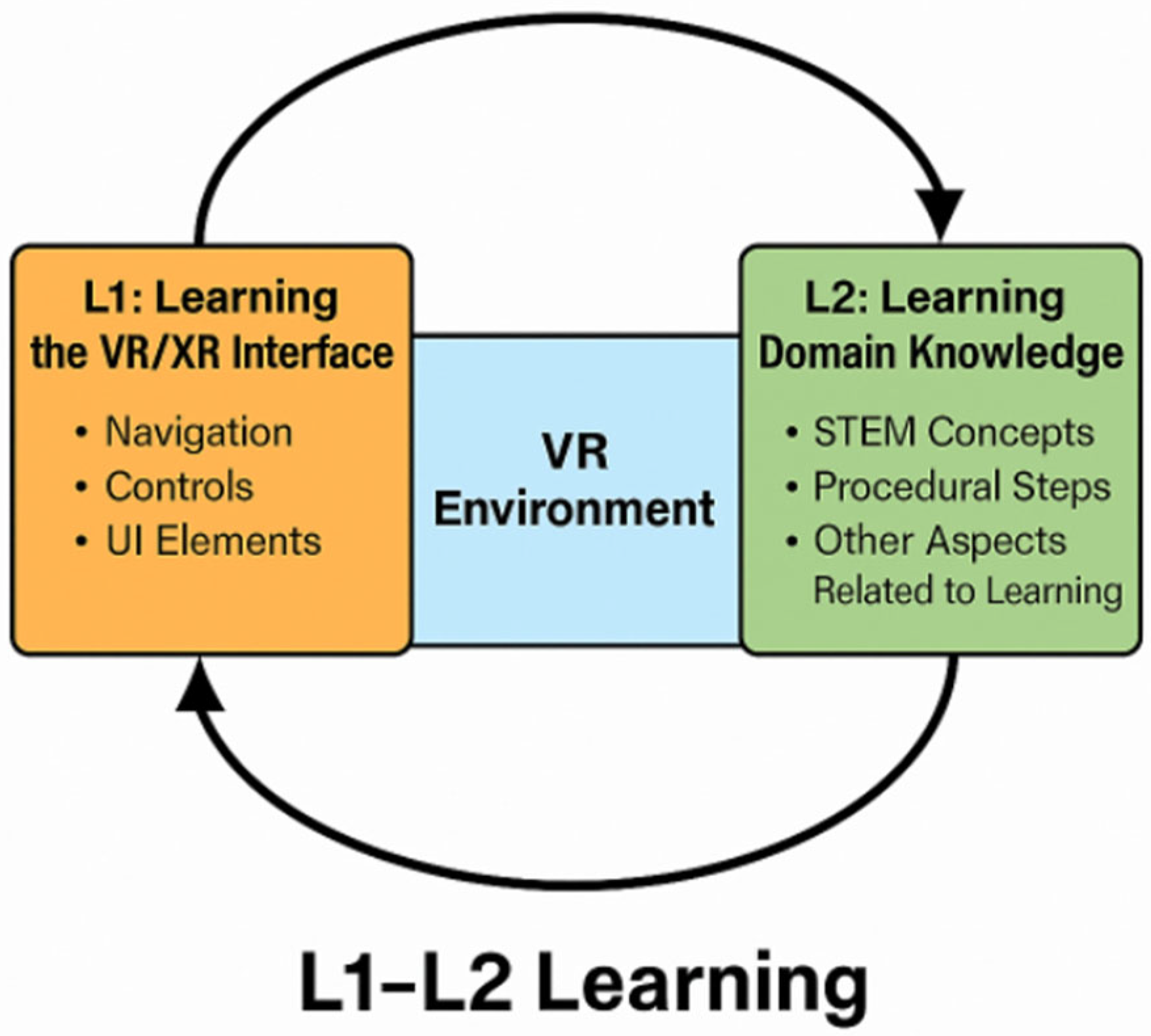


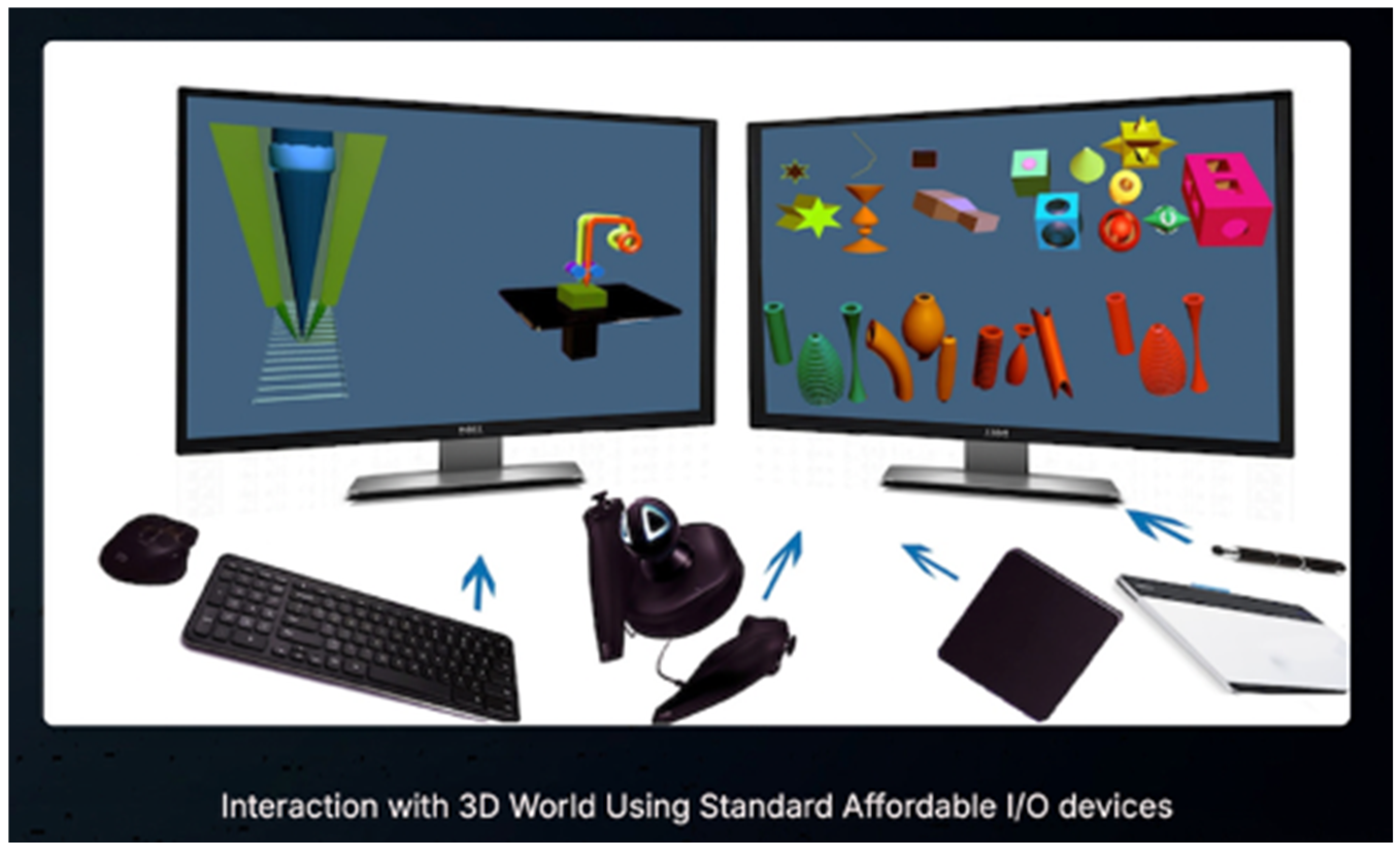
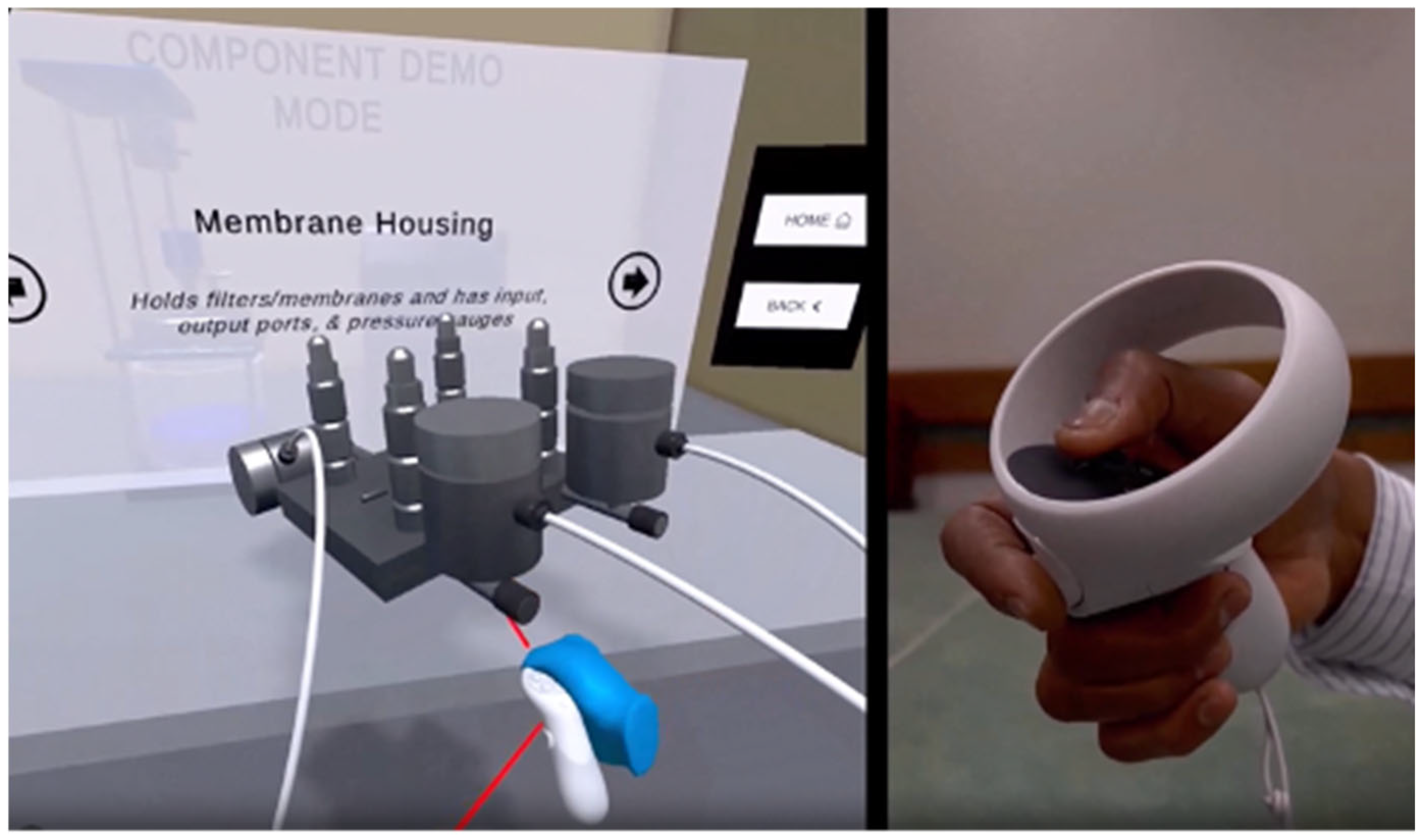
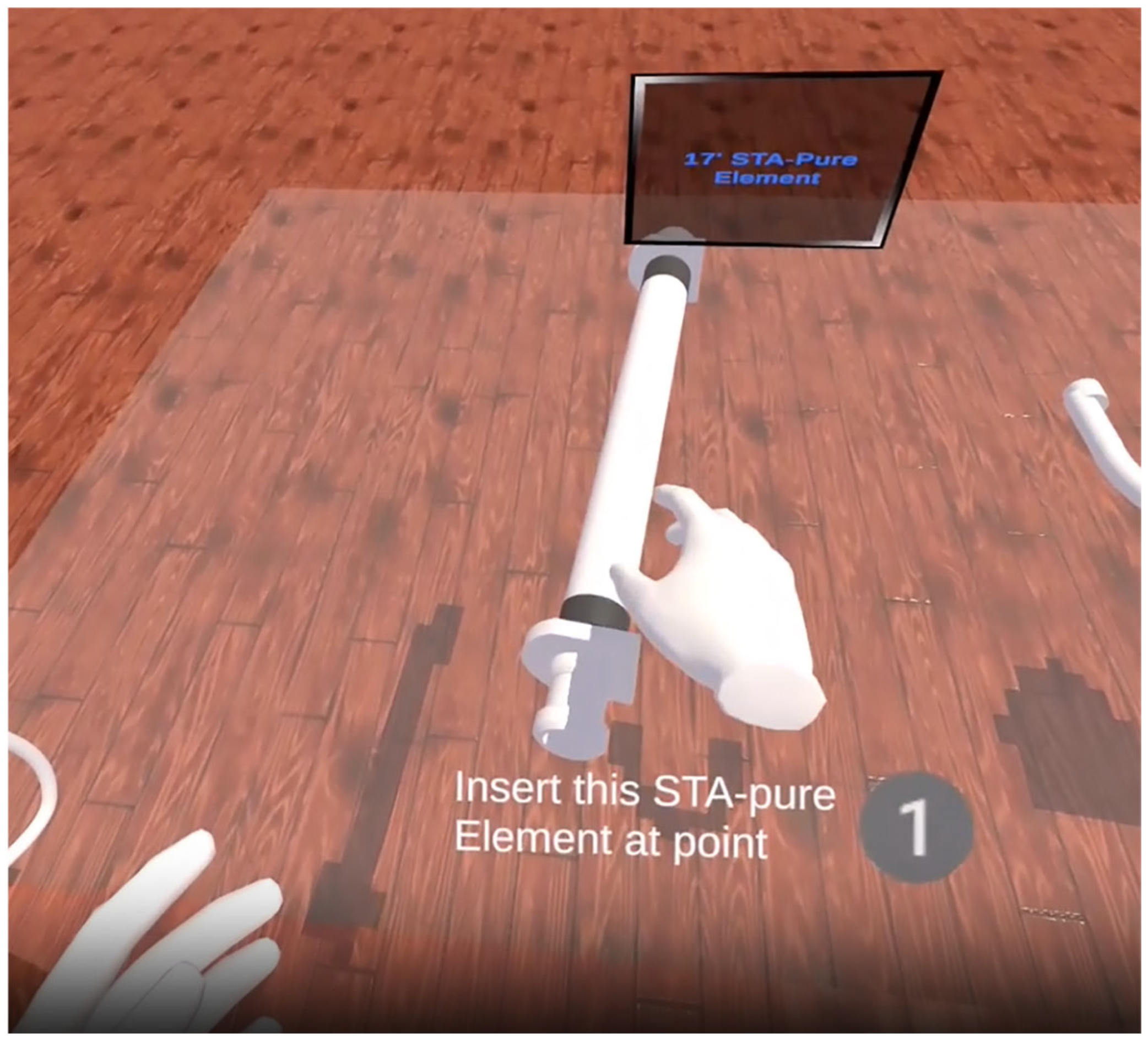

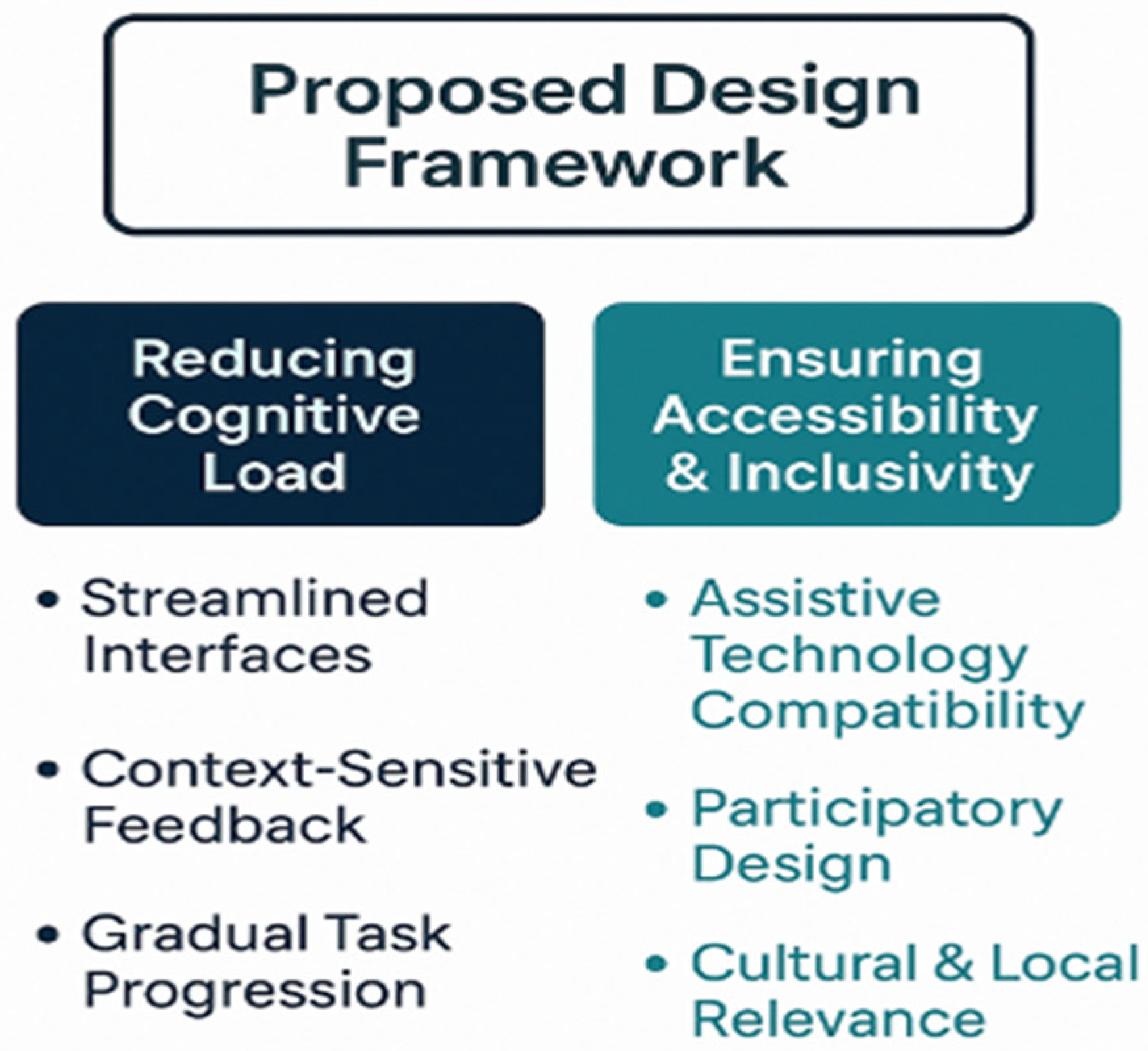

| Affordance Type | Description | Positive Impact | Observed Limitations |
|---|---|---|---|
| Gesture-Based Interaction | Use of hand or body movements for control (e.g., grabbing, rotating) | Increased realism, engagement, and fine motor mapping [7,21] | Learning curve; fatigue in longer tasks |
| Contextual Overlays | Real-time instructional cues or visual aids embedded in the XR environment | Improved procedural clarity and task sequencing [22,23] | Risk of screen clutter if poorly designed |
| Multi-Modal Feedback | Combines visual, auditory, and haptic responses | Enhances error detection and reinforcement of concepts [17,30] | Can cause sensory overload without adaptive control |
| Scaffolding Mechanics | Stepwise interaction guidance based on learner progress | Reduces extraneous load, supports novices in complex tasks [31,32] | May restrict autonomy for more experienced users |
| Real-Time Object Manipulation | Ability to dynamically explore and modify virtual objects | Deepens conceptual understanding, especially in STEM domains [33,34] | Performance lag in lower-end XR systems |
| Agency Feature | Example Implementation | Effect on Learning Outcomes | Design Considerations |
|---|---|---|---|
| User-Driven Navigation | Non-linear scene access or timeline control | Encourages exploration and self-paced learning [30,35] | Needs clear cues to prevent disorientation |
| Adaptive Difficulty Levels | Tasks adjust based on real-time performance | Maintains flow and reduces frustration [18,36] | Calibration required to avoid under/over-challenging users |
| Scenario-Based Branching | Learners make decisions that alter the learning pathway | Increases motivation and critical thinking [22,37] | Must align with learning objectives |
| Real-Time Variable Manipulation | Modify system parameters in simulations (e.g., pH, force) | Enhances experimental understanding and autonomy [25,40] | Can be overwhelming without adequate domain knowledge |
| Feedback on Decision Outcomes | Immediate response to learner choices | Reinforces cause-effect reasoning, supports L2 learning [2,37] | Should balance guidance with exploratory freedom |
Disclaimer/Publisher’s Note: The statements, opinions and data contained in all publications are solely those of the individual author(s) and contributor(s) and not of MDPI and/or the editor(s). MDPI and/or the editor(s) disclaim responsibility for any injury to people or property resulting from any ideas, methods, instructions or products referred to in the content. |
© 2025 by the authors. Licensee MDPI, Basel, Switzerland. This article is an open access article distributed under the terms and conditions of the Creative Commons Attribution (CC BY) license (https://creativecommons.org/licenses/by/4.0/).
Share and Cite
Chandramouli, M.; Zafar, A.; Williams, A. A Detailed Review of the Design and Evaluation of XR Applications in STEM Education and Training. Electronics 2025, 14, 3818. https://doi.org/10.3390/electronics14193818
Chandramouli M, Zafar A, Williams A. A Detailed Review of the Design and Evaluation of XR Applications in STEM Education and Training. Electronics. 2025; 14(19):3818. https://doi.org/10.3390/electronics14193818
Chicago/Turabian StyleChandramouli, Magesh, Aleeha Zafar, and Ashayla Williams. 2025. "A Detailed Review of the Design and Evaluation of XR Applications in STEM Education and Training" Electronics 14, no. 19: 3818. https://doi.org/10.3390/electronics14193818
APA StyleChandramouli, M., Zafar, A., & Williams, A. (2025). A Detailed Review of the Design and Evaluation of XR Applications in STEM Education and Training. Electronics, 14(19), 3818. https://doi.org/10.3390/electronics14193818







